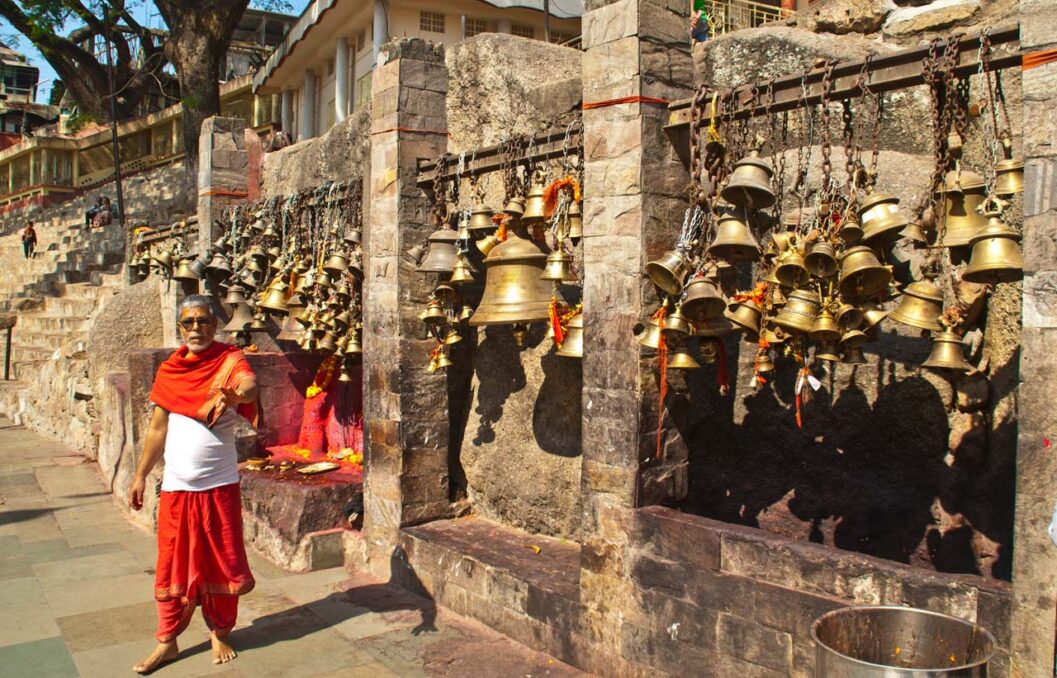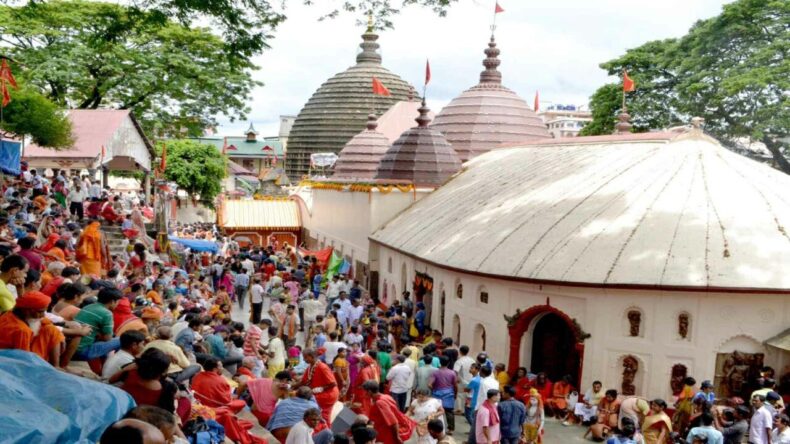| 1. | History |
| 2. | Menstruation: The Celebrated Taboo |
| 3. | The Current Scenario |
History
There exists a profoundly powerful narrative concerning the Kamakhya Temple, which encompasses one of the revered Shakti Pithas. The tale delves into antiquity when Lord Shiva was united in matrimony with Sati, an embodiment of divine feminine energy. When Sati’s father, Daksha, disparaged her husband, Lord Shiva, she immolated herself, utilizing her own potent vitality. Enraged, Lord Shiva clutched her charred remains and engaged in a furious dance. Subsequently, fragments of her bodily form descended and scattered across diverse locations.
Notably, her yoni (genital) landed in the western vicinity of Guwahati city, situated in Assam, India, where the Kamakhya Temple was erected. What manifests within this sacred abode stands as one of the most ancient among the fifty-one (51) Shakti Pithas. Undoubtedly, this temple holds profound reverence as a significant pilgrimage site for devotees of Tantra throughout the nation.
Menstruation: The Celebrated Taboo
In a land where debates rage over whether a menstruating woman should set foot inside a temple, there exists a remarkable and unparalleled sanctuary. This temple stands apart as the epitome of uniqueness and distinction within the country. Here, the natural and biological process of a woman’s body is not only acknowledged but celebrated.

Deep within the temple, lies the revered Yoni of the Goddess, believed to bleed once a year during the period when the temple is closed to the public. While no one is permitted to witness this sacred occurrence, there is an extraordinary tradition that unfolds. Visitors have the opportunity to partake in a ritual that honours the divine flow of life. The Ambubachi Mela is what we understand as an annual Hindu mela (gathering) conducted at the Kamakhya Temple in Guwahati, Assam. This yearly mela is held during the monsoon season, which falls during the Assamese month Ahaar, around the middle of June, when the sun transits to the zodiac of Mithuna and the Brahmaputra river is in flood.
The Current Scenario
The Ambubachi Mela at the Kamakhya temple concluded with the opening of the sanctum sanctorum doors at 6 a.m. on Monday, much to the joy of the committed guests. Throughout the morning, throngs of worshippers gathered to the temple, patiently waiting in huge lines for hours to see the venerated sanctum sanctorum. Those who had travelled from faraway locations went home by rail after presenting their prayers. The stream of devotees continued far into the evening, reflecting the temple’s lasting popularity.
According to the Kamakhya temple committee, footfall this year exceeded 500,000, more than tripling previous year’s figures. Since the previous Thursday, the temple grounds had been teeming with sadhus, tantriks, worshippers, and tourists from all over the country. A substantial number of tourists came from West Bengal, Bihar, Jharkhand, Gujarat, Uttar Pradesh, and Delhi, creating a dynamic tapestry of varied origins.

The Kamrup (Metro) district government and the Assam Police, who gave invaluable support in organising the event, were credited with the mela’s success. Kabindra Sarma, the temple’s main priest, expressed gratitude for their assistance, noting that handling such a large throng and guaranteeing the mela’s flawless functioning would have been difficult without their assistance.
Notably, the temple management did not provide VIP or VVIP credentials to worshippers on Monday. This amenity, however, is available on other days. The decision was made to forego special privileges on that specific day in order to provide equal respect and devotion for all devotees and tourists alike so that everyone might engage in the heavenly experience without distinction.













